-
 Bitcoin
Bitcoin $107,341.7259
0.15% -
 Ethereum
Ethereum $2,438.6204
0.70% -
 Tether USDt
Tether USDt $1.0003
-0.02% -
 XRP
XRP $2.1866
1.94% -
 BNB
BNB $649.0952
0.36% -
 Solana
Solana $150.9602
5.63% -
 USDC
USDC $0.9999
0.00% -
 TRON
TRON $0.2742
0.40% -
 Dogecoin
Dogecoin $0.1645
1.93% -
 Cardano
Cardano $0.5669
1.18% -
 Hyperliquid
Hyperliquid $37.8286
4.19% -
 Bitcoin Cash
Bitcoin Cash $491.4669
-2.74% -
 Sui
Sui $2.8150
3.06% -
 Chainlink
Chainlink $13.4184
2.91% -
 UNUS SED LEO
UNUS SED LEO $9.0809
0.27% -
 Avalanche
Avalanche $18.0295
2.60% -
 Stellar
Stellar $0.2396
1.19% -
 Toncoin
Toncoin $2.8587
0.13% -
 Shiba Inu
Shiba Inu $0.0...01160
2.59% -
 Litecoin
Litecoin $86.4192
1.45% -
 Hedera
Hedera $0.1486
1.19% -
 Monero
Monero $308.4324
0.87% -
 Polkadot
Polkadot $3.4202
1.43% -
 Bitget Token
Bitget Token $4.6436
-0.34% -
 Dai
Dai $0.9998
-0.02% -
 Ethena USDe
Ethena USDe $1.0002
0.00% -
 Uniswap
Uniswap $7.1527
3.29% -
 Pi
Pi $0.5357
-8.45% -
 Pepe
Pepe $0.0...09588
4.61% -
 Aave
Aave $259.9759
0.81%
How to deal with network forks in blockchain development?
Blockchain developers must understand hard and soft forks, their causes (e.g., protocol disagreements, security flaws), and mitigation strategies (thorough testing, community communication). Handling consequences requires code upgrades and community consensus to maintain stability and security.
Mar 11, 2025 at 10:50 pm
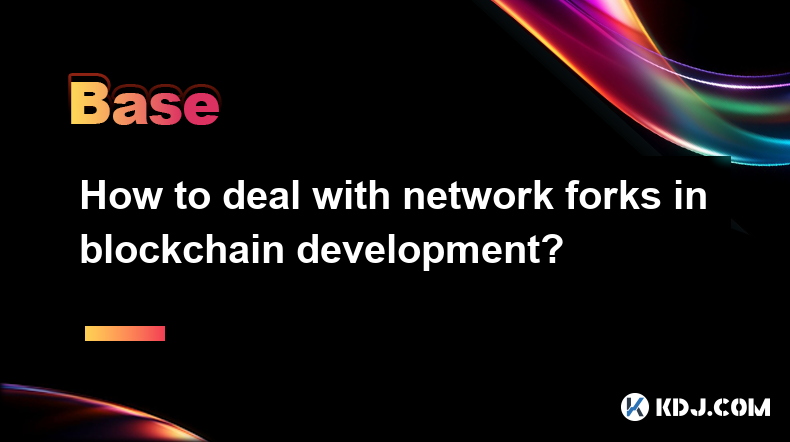
Key Points:
- Understanding the types of blockchain forks (hard forks and soft forks).
- Identifying the causes of network forks.
- Implementing strategies to mitigate the risks of forks during development.
- Handling the consequences of forks through code upgrades and community consensus.
- Preparing for potential future forks and their impact.
How to Deal with Network Forks in Blockchain Development?
Network forks are a common occurrence in the dynamic world of blockchain development. Understanding their nature and implementing appropriate strategies is crucial for developers to maintain the stability and security of their blockchain projects. This article explores how developers can navigate the complexities of blockchain forks.
Understanding Fork Types:
There are two primary types of forks: hard forks and soft forks. A hard fork creates a permanent divergence in the blockchain, resulting in two separate and incompatible chains. This often happens due to significant protocol changes or disagreements within the community. A soft fork, on the other hand, is backward compatible. Nodes running older software can still validate blocks created by nodes running newer software, though they may not be able to create blocks with the new features themselves.
Causes of Network Forks:
Several factors can trigger network forks. Disagreements over protocol upgrades, such as changes to consensus mechanisms or transaction fees, can lead to a hard fork. Security vulnerabilities requiring urgent patches might necessitate a hard fork to implement fixes. Similarly, scaling solutions often necessitate a hard fork to incorporate necessary upgrades. Internal conflicts within the developer community can also contribute to forks.
Mitigation Strategies During Development:
Proactive measures during the development phase can significantly reduce the risk and impact of network forks. Thorough testing of upgrades and new features is paramount. This includes extensive unit testing, integration testing, and even simulated network testing to identify potential issues before deployment. Regular security audits by independent experts can help identify and address vulnerabilities.
Handling the Consequences of Forks:
When a fork occurs, developers need a robust strategy to manage the aftermath. This includes preparing code upgrades to ensure compatibility with the new chain. For hard forks, this might involve creating entirely new client software. Maintaining open communication with the community is essential. Transparency and collaboration are crucial for navigating disagreements and finding consensus.
Dealing with Hard Forks:
Hard forks require careful planning and execution. Developers must communicate the reasons for the fork and the planned changes clearly to the community. They should provide sufficient time for users and developers to upgrade their software to avoid being left on an unsupported chain. Technical documentation and support resources are critical to ensure a smooth transition.
Dealing with Soft Forks:
Soft forks are generally less disruptive than hard forks. However, developers still need to carefully manage the upgrade process. They should ensure that the soft fork is backward compatible and that nodes running older software can still validate transactions. Proper testing and communication remain important to prevent any unforeseen issues.
Preparing for Future Forks:
Predicting future forks is impossible, but proactive preparation can significantly mitigate their impact. Developing modular and flexible code is crucial. This allows for easier upgrades and adaptations to future changes. Monitoring community discussions and staying informed about potential disagreements can help developers anticipate and prepare for potential forks.
Common Questions and Answers:
Q: What is the difference between a hard fork and a soft fork?
A: A hard fork creates a permanent split in the blockchain, resulting in two incompatible chains. A soft fork is backward compatible, allowing older software to validate newer blocks.
Q: How can I protect my cryptocurrency during a fork?
A: Secure your private keys, update your wallet software, and follow instructions from the cryptocurrency's developers or community. Some forks may require you to claim your new coins on the forked chain.
Q: What should I do if my node is incompatible after a fork?
A: Upgrade your node software to the latest version compatible with the new chain. If you can't upgrade, you may need to switch to a different node provider or consider migrating to a different blockchain.
Q: Are all forks beneficial?
A: No, some forks can be detrimental, particularly hard forks resulting from disagreements and leading to a less secure or less stable chain. Other forks can be very beneficial, leading to improved scalability, security, or other features.
Q: How can developers minimize the chances of a hard fork?
A: Through thorough testing, open communication with the community, and careful consideration of potential implications of proposed changes. Actively seeking community feedback can greatly reduce the likelihood of a contentious hard fork.
Q: What role does community consensus play in handling forks?
A: Community consensus is crucial. A successful fork, especially a hard fork, relies heavily on community acceptance and adoption of the changes. Lack of consensus can lead to a fragmented and unstable ecosystem.
Q: What are the long-term implications of a hard fork?
A: Long-term implications vary widely. A successful hard fork can lead to innovation and improvement, while an unsuccessful one can lead to decreased value and community fragmentation. Careful planning and execution are key to positive long-term outcomes.
Disclaimer:info@kdj.com
The information provided is not trading advice. kdj.com does not assume any responsibility for any investments made based on the information provided in this article. Cryptocurrencies are highly volatile and it is highly recommended that you invest with caution after thorough research!
If you believe that the content used on this website infringes your copyright, please contact us immediately (info@kdj.com) and we will delete it promptly.
- Trump, Bitcoin, and Peter Schiff: A New York Minute on Crypto Chaos
- 2025-06-29 12:30:12
- BTC Price, BlackRock ETF, Fed Signals: Decoding the Crypto Crossroads
- 2025-06-29 12:30:12
- SEI Price Skyrockets Amid ETF Hype and Bullish Uptrend: What's Next?
- 2025-06-29 12:50:11
- Bitcoin Mining, Cryptocurrency, and Blockchain: A New York State of Mind
- 2025-06-29 13:10:11
- Pengu, Altcoin, Leads Charge: What's Driving the Meme Coin Frenzy?
- 2025-06-29 13:30:12
- Bitcoin Market Navigates the Neutral Zone: An On-Chain Data Perspective
- 2025-06-29 13:50:12
Related knowledge
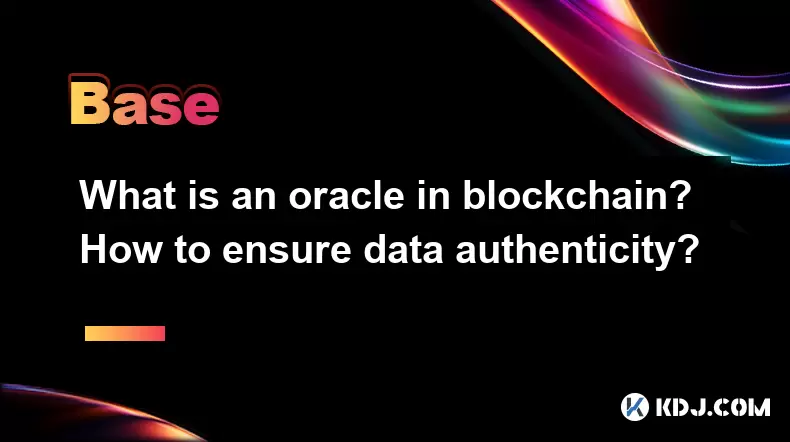
What is an oracle in blockchain? How to ensure data authenticity?
Jun 19,2025 at 08:49pm
Understanding the Role of an Oracle in BlockchainIn the context of blockchain technology, an oracle serves as a bridge between the blockchain and external data sources. While blockchains are inherently secure and decentralized, they cannot access real-world information on their own. Oracles enable smart contracts to interact with off-chain data such as ...
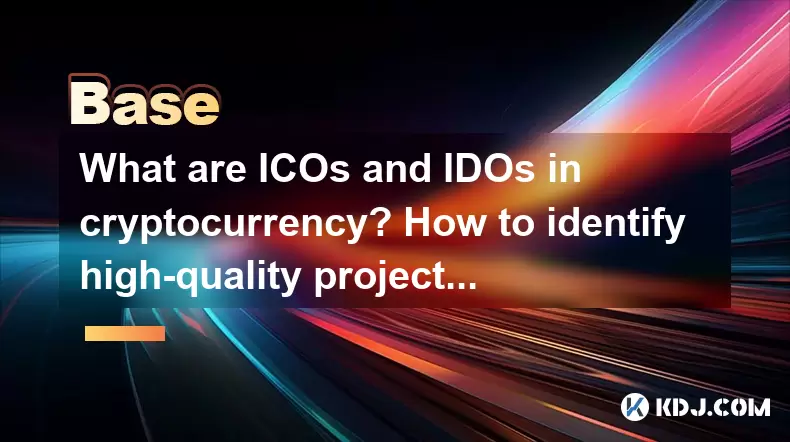
What are ICOs and IDOs in cryptocurrency? How to identify high-quality projects?
Jun 22,2025 at 11:49am
Understanding ICOs in CryptocurrencyInitial Coin Offerings (ICOs) are fundraising mechanisms used by cryptocurrency startups to raise capital for their projects. In an ICO, a company creates and sells its own tokens to investors in exchange for established cryptocurrencies like Bitcoin or Ethereum. The process typically involves the release of a whitepa...
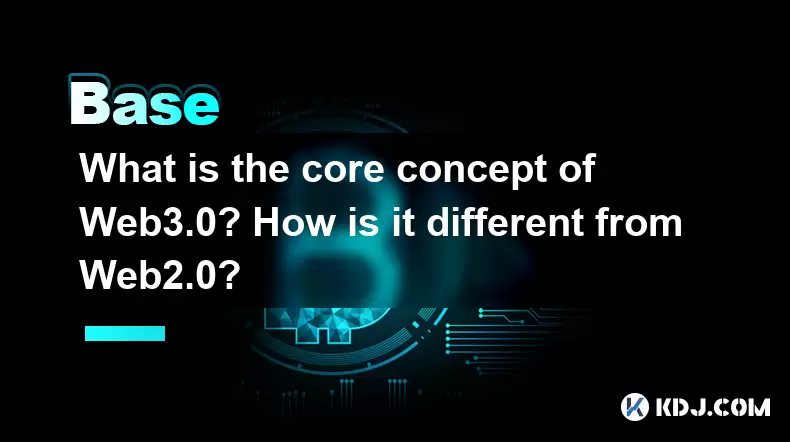
What is the core concept of Web3.0? How is it different from Web2.0?
Jun 21,2025 at 05:56pm
Decentralization as the Foundation of Web3.0The core concept of Web3.0 revolves around decentralization, which fundamentally challenges the centralized architecture of Web2.0. In Web3.0, control and ownership are distributed across a network rather than being held by a central authority or corporation. This is achieved primarily through blockchain techn...
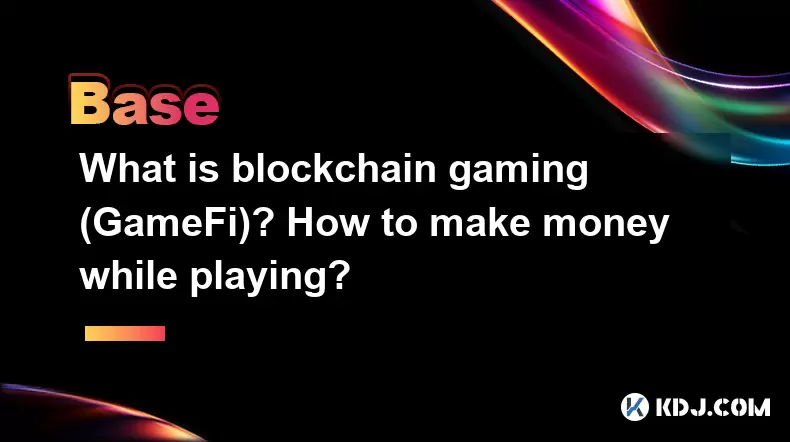
What is blockchain gaming (GameFi)? How to make money while playing?
Jun 20,2025 at 07:56am
Understanding Blockchain Gaming (GameFi)Blockchain gaming, often referred to as GameFi, is a fusion of blockchain technology and video games. It enables players to own in-game assets through non-fungible tokens (NFTs) and earn rewards via cryptocurrencies or token-based systems. Unlike traditional games where items are controlled by centralized develope...
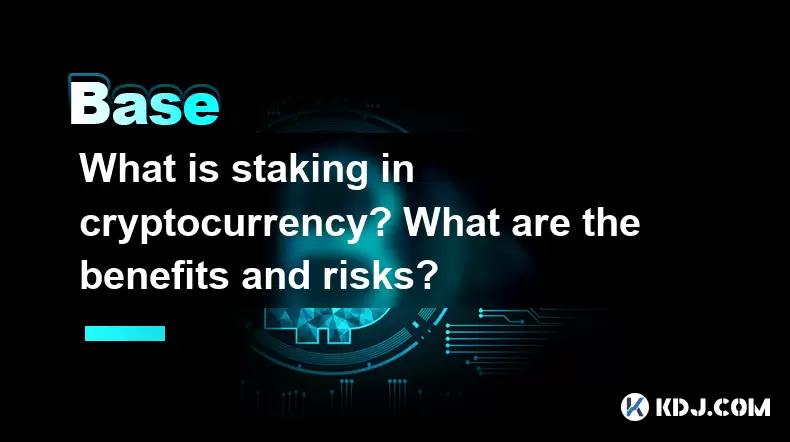
What is staking in cryptocurrency? What are the benefits and risks?
Jun 22,2025 at 10:01am
Understanding the Concept of Staking in CryptocurrencyStaking in cryptocurrency refers to the process of actively participating in transaction validation on a blockchain network that uses a Proof-of-Stake (PoS) consensus mechanism. Instead of miners competing to solve complex mathematical puzzles as in Proof-of-Work systems like Bitcoin, PoS blockchains...
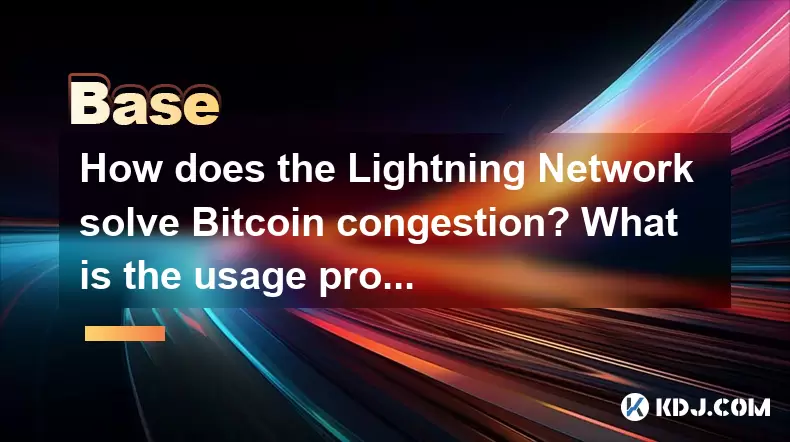
How does the Lightning Network solve Bitcoin congestion? What is the usage process?
Jun 23,2025 at 06:21pm
Understanding Bitcoin Network CongestionBitcoin, as a decentralized digital currency, operates on a blockchain that records every transaction in a public ledger. Each block has a limited size, typically 1 megabyte, which allows for only a certain number of transactions per second (TPS). When the number of transactions increases, the network becomes cong...

What is an oracle in blockchain? How to ensure data authenticity?
Jun 19,2025 at 08:49pm
Understanding the Role of an Oracle in BlockchainIn the context of blockchain technology, an oracle serves as a bridge between the blockchain and external data sources. While blockchains are inherently secure and decentralized, they cannot access real-world information on their own. Oracles enable smart contracts to interact with off-chain data such as ...

What are ICOs and IDOs in cryptocurrency? How to identify high-quality projects?
Jun 22,2025 at 11:49am
Understanding ICOs in CryptocurrencyInitial Coin Offerings (ICOs) are fundraising mechanisms used by cryptocurrency startups to raise capital for their projects. In an ICO, a company creates and sells its own tokens to investors in exchange for established cryptocurrencies like Bitcoin or Ethereum. The process typically involves the release of a whitepa...

What is the core concept of Web3.0? How is it different from Web2.0?
Jun 21,2025 at 05:56pm
Decentralization as the Foundation of Web3.0The core concept of Web3.0 revolves around decentralization, which fundamentally challenges the centralized architecture of Web2.0. In Web3.0, control and ownership are distributed across a network rather than being held by a central authority or corporation. This is achieved primarily through blockchain techn...

What is blockchain gaming (GameFi)? How to make money while playing?
Jun 20,2025 at 07:56am
Understanding Blockchain Gaming (GameFi)Blockchain gaming, often referred to as GameFi, is a fusion of blockchain technology and video games. It enables players to own in-game assets through non-fungible tokens (NFTs) and earn rewards via cryptocurrencies or token-based systems. Unlike traditional games where items are controlled by centralized develope...

What is staking in cryptocurrency? What are the benefits and risks?
Jun 22,2025 at 10:01am
Understanding the Concept of Staking in CryptocurrencyStaking in cryptocurrency refers to the process of actively participating in transaction validation on a blockchain network that uses a Proof-of-Stake (PoS) consensus mechanism. Instead of miners competing to solve complex mathematical puzzles as in Proof-of-Work systems like Bitcoin, PoS blockchains...

How does the Lightning Network solve Bitcoin congestion? What is the usage process?
Jun 23,2025 at 06:21pm
Understanding Bitcoin Network CongestionBitcoin, as a decentralized digital currency, operates on a blockchain that records every transaction in a public ledger. Each block has a limited size, typically 1 megabyte, which allows for only a certain number of transactions per second (TPS). When the number of transactions increases, the network becomes cong...
See all articles

























































































